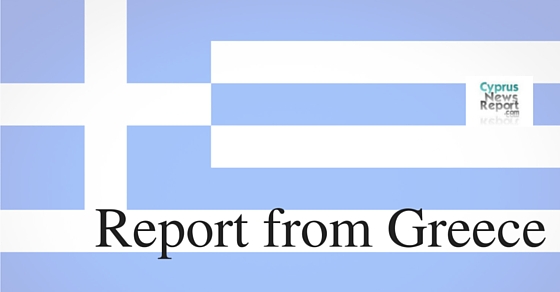Greece remains a wondrous culture with a civilisation rooted in art, philosophy, sportsmanship and literature since 800 BC.
We travelled by car from Athens to the quieter regions of Nemea and the Peloponnese. As February is the off-season, the roads were not crowded and we could enjoy the beautiful scenery of gently rolling mountains, blue sea and green fields.
The signs had names we’ve heard about from childhood; Mycenae, where one of the earliest Greek civilisations lived and created the iconic pottery now in museums around the world; Epidavros, the location of an ancient amphitheatre; and the ancient site of Nemea, now Greece’s wine-country central.
The art of living beautifully is everywhere in Greece, from the Parthenon in Athens to the pottery in Mycenae and the ceramics in Nafplio.
Mycenae
Historians believe that it was the Mycenaeans who conquered Troy, a city in Asia Minor (modern-day Turkey). Legend goes that one of their war tactics was the Trojan Horse, which they built to hide the Greek soldiers inside. To convince their enemy that they had given up the siege of Troy, the rest of the army made a big show of leaving and hid not far away. A spy was left behind to convince the Trojans that the rest of the Greeks had given up and left him behind because they hated him. The Trojans then rolled the Horse inside the city and started celebrating their victory too soon, because the Greeks hiding inside it made a surprise attack. The rest of the Greek army rushed to the attack and Troy was won.
The Silo Art Factory in Mycenae pays tribute to the legend and has created a Trojan Horse of its own. It’s made half of metal and half of re-used wood, and has wooden wheels. As they served us orange sweet preserve, the owners of Silo Art Factory showed us around their workshop where they hold classes and send orders for giant urns and pottery around the world.
The Isthmus of Korinth
The Isthmus of Korinth is joined by narrow bridges which are windswept and cold but well worth crossing to take in the magnificent view of a narrow canal built to join the Saronic Gulf of the Aegean and the Gulf of Korinth, an inlet of the Ionian Sea. In the first century AD, the canal was used by ships travelling from the Adriatic Sea to Piraeus Port in mainland Greece.
Nafplio, Peloponnese
The coastal town of Nafplio was the home of the first governor of Greece, Ioannis Kapodistrias, who ruled just after the Ottoman Empire was overthrown by a Greek rebellion. He was a respected, lifelong diplomat with a talent for uniting people and introducing progressive ideas, but he had many enemies amid the power vacuum left by the rebellion and the internal power struggles for control over Greece between wealthy, influential families. Kapodistrias imprisoned the rebel Petrobey Mavromichalis in 1831, effectively signing his own death warrant.
Kapodistrias was assassinated on the steps of St. Spyridon Church by Petrobey’s brother Konstantis and son Georgios on September 27th, 1831. Konstantis stabbed him to death in the stomach after missing his victim with a pistol shot, and then Georgios shot him in the head. The bullet from Konstantis’ gun can still be seen behind glass on the wall of the church. A plaque reads ‘Here was assassinated the first Governor of Greece, IO. Kapodistrias’.
Nafplio town has an artistic tourist shopping centre, with artisans from all walks of life. Ceramic artists, fashion designers, scarf weavers, sweets-and-preserve makers, soap makers, woodworkers, and komboloi (worry beads) offer their well-made wares in their small shops. Each road has these sweet little shops on either side of the pedestrian area lining the central piazza built by the Venetians in the 13th Century.
Clothes designer Maria Mitreli has a workshop in Nafplio where she creates her very feminine clothes with fine finishes and soft accessorising touches like flower boutounieres and hats.
Maria, or Marilou as her friends call her, brings a long-lost touch of nostalgia and prettiness into her designs.
She chooses fresh, feminine colours like spring green, aqua and subtle orange to set off and flatter.
Weaver and scarf designer Maria Gonidou makes these beautiful accessories with distinct patterns and colours. High quality and good value for money make these scarves a lifetime possession and memory of Nafplio.
The ceramics by Politimi are a must-see, she does exquisite works for sale and is also a master potter whose workshops are in demand by ceramics students.
After all that history and walking around, we finished off the evening with a coffee on the seafront and a meal at ‘Alaloum’ restaurant, where I had the best calamari I’ve ever tasted.
[adrotate banner=”4″]



